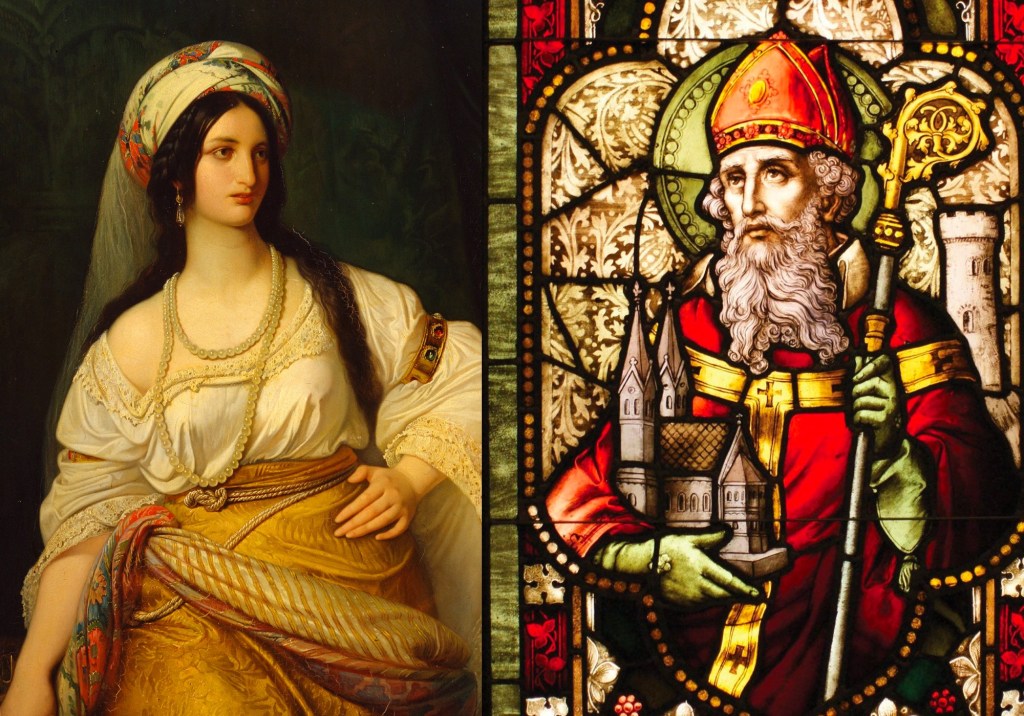
As luck would have it, Purim and St. Patrick’s Day fall on the same day this year. At first glance these holidays don’t seem to have much in common. But meditating on them this morning, I found that they share quite a few themes.
Purim
Purim celebrates the deliverance of the Jewish people from genocide. The story begins with Esther and Mordecai, two Jews who have been kidnapped from their native land of Israel and forced to live as exiles in Persia. Through an unexpected series of events, Esther is delivered from slavery when she is declared the Queen of Persia. Mordecai also rises up the ranks, becoming a member of the King’s court. For a number of years, Esther lives in the King’s court, until Haman the Agagite attempts to annihilate God’s chosen people. Esther bravely risks her safety by approaching the King and announcing her Jewish heritage. The King is sympathetic to Esther, orders Haman’s execution, and issues a decree that ultimately saves the Jewish people.
One striking detail of the story that often gets overlooked appears toward the end of the narrative: “In every province and city, wherever the king’s command and decree came, the Jews had joy and gladness, a feast and a holiday. Then many of the people of the land became Jews…” (Esther 8:17).
The events of the story and the actions of Esther and Mordecai not only save the Jewish people but bring many Gentiles into God’s family. This isn’t just a deliverance of one nation from physical death; it’s also a deliverance of all nations from spiritual death.
St. Patrick’s Day
Patrick was born in Britain, but at the age of 16 he was kidnapped by pirates and taken as a slave to Ireland. He labored there for six long years, until God appeared to him and led him to trek 200 miles through the wilderness, where he found a waiting ship and was miraculously able to talk his way on board. After arriving in Britain, the sailors were starving, but through Patrick’s prayer of faith God provided sustenance for the group. Patrick eventually made it home and lived for a number of years with his family, until God called him back to the land of his captivity.
Patrick returned to Ireland, this time as a missionary, and spent the remainder of his life ministering to idol-worshippers and kings. And his work was not in vain. According to his autobiography, he “baptized so many thousands of people,” and according to Thomas Cahill, he saved not only the people of Ireland but all civilization.
Like Esther, Patrick lived as a slave and exile in a land not his own. Like Esther, he was supernaturally delivered from his fate through the providence of God. Like Esther, he sacrificed his newfound freedom to speak God’s truth. And like Esther, his actions resulted in thousands coming to God and nations being transformed.
And just like Esther and St. Patrick, you too are an exile (1 Peter 1:1, 2:11) living in Babylon (1 Peter 5:13), having no permanent home and seeking the one to come (Hebrews 13:14). Like Esther and Patrick, the world you’re living in is not your own (John 18:36). But rather than living for no other reason than to escape this fallen world, choose the paths of Esther and Patrick. Live to redeem this fallen world. Be the light in the darkness (Ephesians 5:8). Usher in God’s kingdom on the earth (Matthew 6:10, 11:12). Go into all this fallen world and preach the gospel throughout all creation (Mark 16:15). All of creation is waiting for you to stop hiding and start bringing God’s blood-bought freedom into the world (Romans 8:19-22).
“As you go, therefore, make disciples of all the nations, baptizing them in the name of the Father and of the Son and of the Holy Spirit, teaching them to observe all things that I have commanded you; and lo, I am with you always, even to the end of the age.” (Matthew 28:19, 20)
